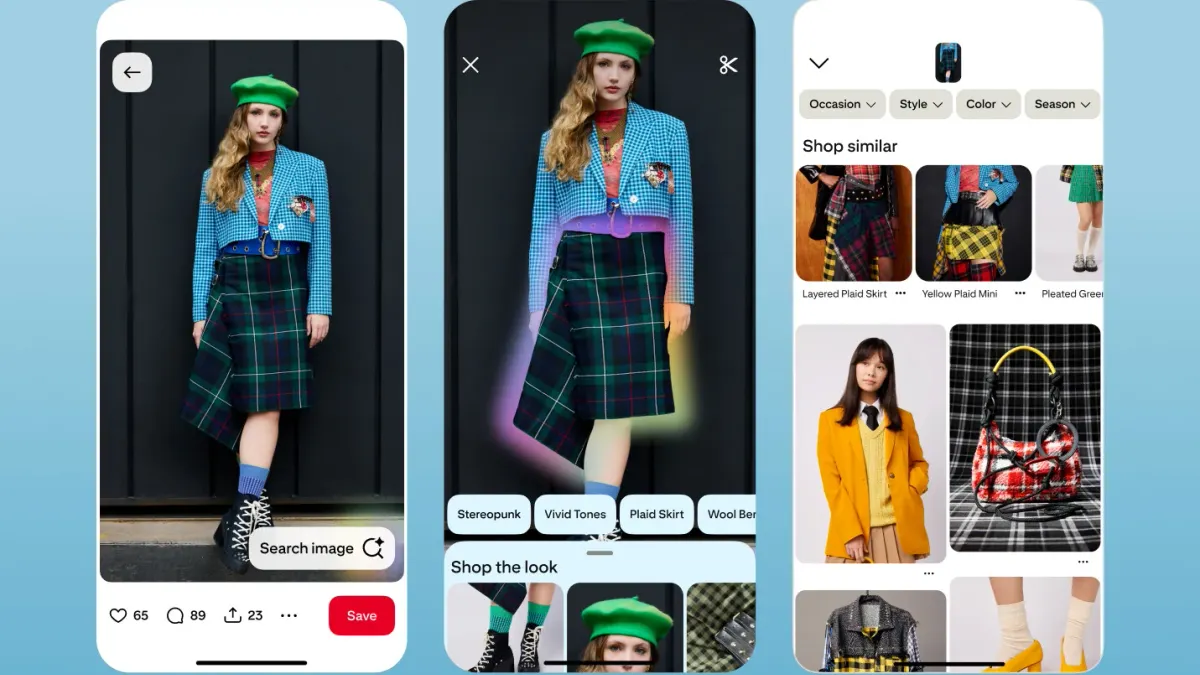Dive Brief:
- Pinterest will double down on its visual search experience investments this year, executives said on a Q1 2025 earnings call Thursday.
- The social media platform launched a new user flow for searching women’s fashion earlier this week and will expand fresh user flows to other categories over time. Users can now zoom in on a certain element of a picture, like a pair of shoes, and an AI tool will suggest words related to visual or stylistic characteristics of the image to refine the search, according to CEO Bill Ready.
- “A key driver of our success is our intentional effort to build a better, more relevant platform for our users,” Ready said during the call. “One that connects them to styles, products and aesthetics they may not have the words to describe. In fact, according to academic studies, 50% of the human brain is wired for visual processing.”
Dive Insight:
Pinterest’s strength lies in its visual exploration capabilities, which helps it stand out from competitors focusing on general purpose search, according to Ready.
The social media company’s visual recommendations are powered by its in-house AI model, which is trained on image and text data.
The model uses Pinterest’s taste graph, a collection of data and information that helps the platform understand its users and content, according to Ready. The taste graph draws from "hundreds of billions" of user actions and has grown 75% over the last two years.
Visual search improvements are also driving Pinterest’s bottom line by serving customers better ads, according to Ready.
While it’s too early to measure the impact of the newest visual image search flow, Pinterest’s earlier AI investments show signs of paying off. Revenue was up 16% year over year to $855 million in the first quarter of 2025, according to a company earnings report. Global monthly active users were up 10% year over year to a record 570 million.
Pinterest reported net income of $8.9 million in the first quarter of 2025, up from a $24.8 million loss in the first quarter of 2024.
“Our users are planners and often come to us for their most considered purchases,” Ready said. “As such, our ability to leverage AI to personalize our users’ experience is a key differentiator and has enabled us to find our best product market fit in years.”










